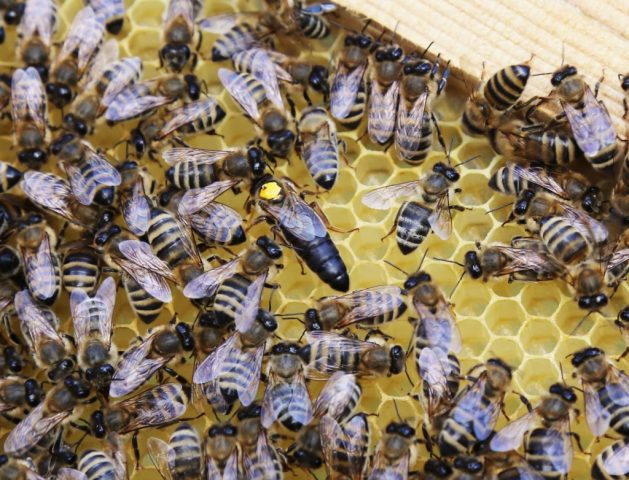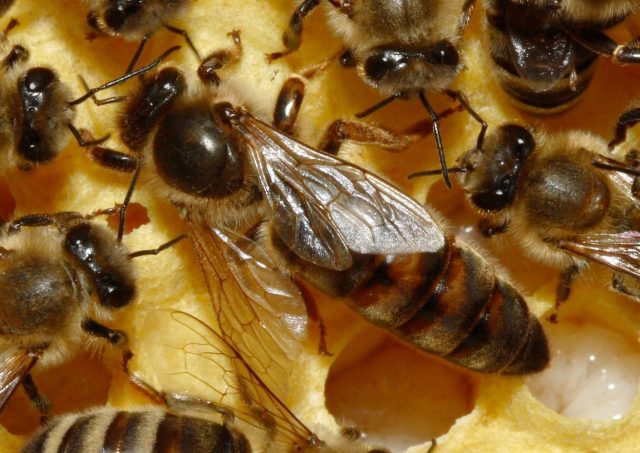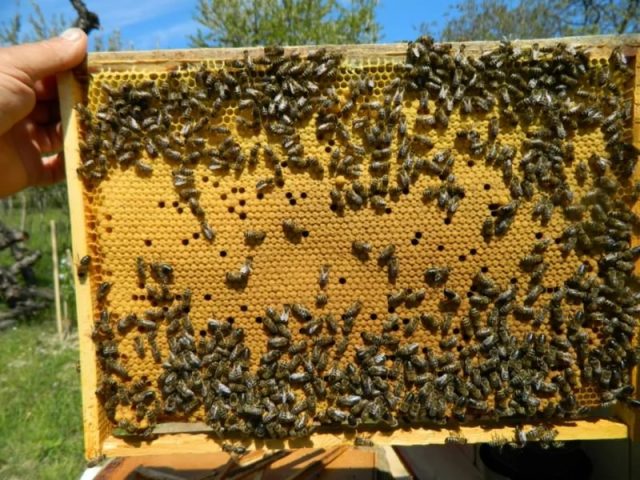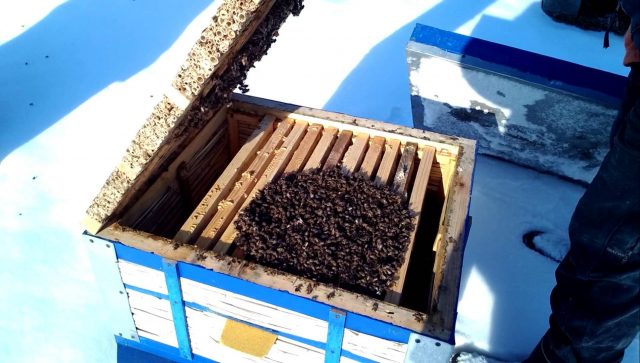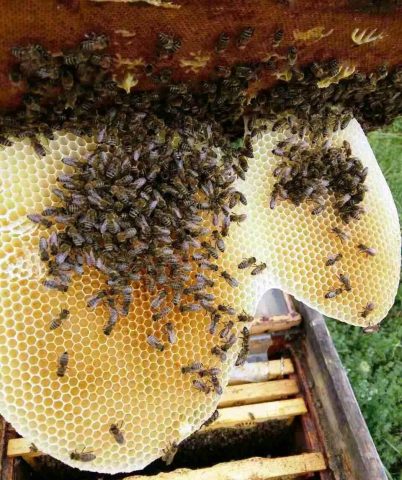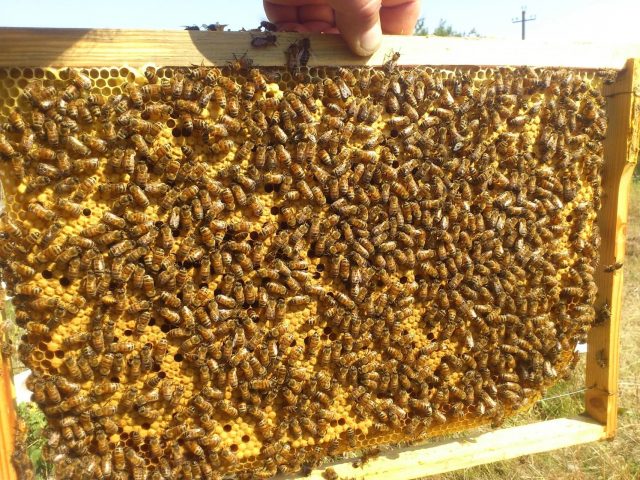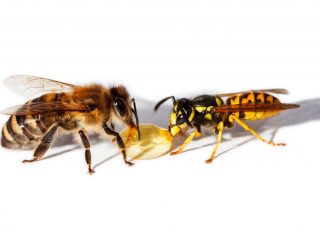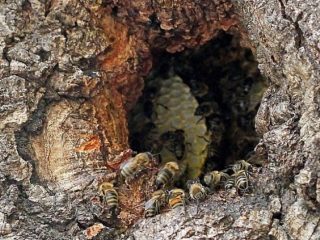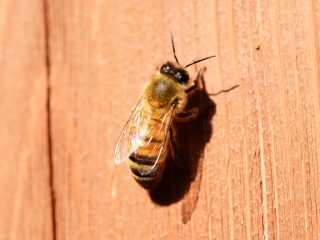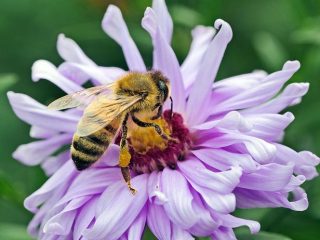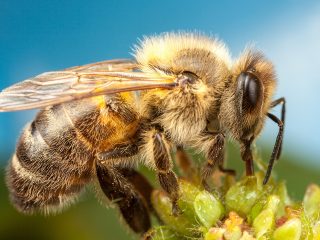Content
Beekeeping is a branch of agriculture that has been actively developing in recent decades. In the modern world, beekeepers can choose between different breeds of insects. Karpatka is a type of honey bee that is bred in many countries.
Description of the Karpatka breed
Carpathian bees owe their name to the Carpathian mountain range, which is located in Eastern Europe. Karpatka is successfully grown in Ukraine, Russia, the Czech Republic, and Slovakia. The first description of Carpathian bees was made in the middle of the 20th century. A population of carpathian moths was discovered in the European highlands. Beekeepers preserved it and began to breed it in different countries. Scientists from Korea and China are breeding this species. This interest in Carpathian bees can be explained by their versatility: they are able to survive in regions with different climatic conditions.
Physical characteristics of the species:
- painted gray with silver tints;
- the average size of the proboscis is 6 mm, in some carpathians it reaches 7 mm;
- wing length - about 10 mm;
- at birth the individual weighs 110 mg;
- the wing index, or cubital index, of the Carpathian fish reaches 2.6;
- The abdominal width of the body is 4.5 mm.
Description of the Carpathian uterus
The queen bee is the female of a particular bee colony. Its main function is the laying of eggs, from which new queens, workers or drones subsequently develop. The appearance of the uterus is different from that of the worker. The queen bee weighs more than 200 mg and can reach up to 230 mg. The color of the uterus can vary from black to bright burgundy. The queen lives in the hive from 3 to 5 years, but if her performance decreases, beekeepers can replace her artificially after 1 or 2 years of work.
Queen bees of the Carpathian breed have a sting, the use of which is used against other queen bees of the bee colony. The queen bee has well-developed jaw glands, which secrete a special liquid that is distributed throughout the body. The workers lick it off and spread it throughout the entire nest. This liquid tends to suppress the ability to lay eggs in other female bees.
For a long period, the queen bee feeds on milk, which is brought to her by worker bees. Before departure, she begins to consume honey, while her weight decreases, and she becomes able to fly out of the hive. Its flight aims to alternately mate with several drone partners. At the same time, insects avoid inbreeding, which allows them to maintain the population and prevent homogamy.
The uterus lays 1800 eggs in one day; after artificial interventions, the figure can increase to 3000.
Features of Karpatka bees
The Carpathian bee is popular among experienced beekeepers. This is explained by the description of the breed:
- insects are able to fly in any weather;
- the work of Carpathian bees begins in early spring;
- the average family collects from 50 to 80 kg of honey;
- high rates of bee colony growth;
- the ability to collect honey from any plant;
- willingness to work in confined spaces;
- low swarming rates;
- high adaptation rates.
How do bees of this breed behave?
According to reviews from those who raise bees in different regions, the Carpathian bee is one of the most peaceful species. When inspecting the hive and moving the frames, the insects do not move on them and calmly await the end of the inspection. Scientific data confirm that only about 5% of all bee colonies of the Carpathian breed are susceptible to swarming. A competent, experienced beekeeper can stop the swarming process in a timely manner.
How do they cope with wintering?
The frost resistance of Carpathian bees is considered average. But due to the increase in family size, as well as the early first flight, these indicators are almost not taken into account. For this breed, it is important to maintain an optimal level of humidity in the hive in winter; carpathian bees are recommended to be brought into the winter hut after the temperature reaches below zero. Strong families of the Carpathian breed can endure wintering in insulated hives in the wild.
Can a Carpathian bee winter outside in the northwestern region?
The northwestern region is characterized by low precipitation and an increased duration of the winter period. There are two wintering options for bees:
- Wintering in a warm room.
- Wintering in an insulated hive in the wild.
Beekeepers in the northwestern region recommend leaving strong colonies of the Carpathian breed in the wild, and the volume of fodder honey should be increased: 25 - 30 kg of the flower variety should be stored for 1 family.
Disease resistance
Insects have good resistance to various infections. Nosema, varroatosis, and acarapidosis are rare in Carpathians. Carpathians are among the leading bee breeds that have stable immunity.
Recommended regions for breeding
Carpathian bees are recommended for breeding in the southern regions, in the European part of the country. Despite the opinion of beekeepers that the Carpathian bee is thermophilic, it is successfully bred in Siberia and the Trans-Baikal Territory. This is explained by the ability of the karpatka to adapt to new conditions. In addition, it is easily transported; bee colonies have almost no losses after delivery by ground transport.
Carpathian bees are especially popular in Belarus, Ukraine, Kyrgyzstan, Uzbekistan, and Eastern Europe.
Breed productivity
A special feature of the Carpathian breed is the collection of honey from different types of plants. Thanks to the early first flight and the ability to collect nectar from flowering honey plants, strong colonies produce about 80 kg of honey seasonally. Honey produced by Carpathian bees has a memorable taste and contains almost no impurities.
Advantages and disadvantages of the breed
Among the main advantages of the species are efficiency, resistance to infection, and calm disposition. But the carpathian fish also has its disadvantages, which must be taken into account when purchasing individuals.
The disadvantages of the breed include:
- tendency to steal (bees fly into the territory of other hives and take away honey);
- limited amount of propolis in the hives (insects do not tend to produce propolis in sufficient quantities, this mechanism increases wax consumption);
- ignoring wax moths (carpathian moths do not fight the parasite and allow it to destroy honey reserves);
- manifestation of aggression in areas with low night temperatures (such observations are shared by beekeepers who keep bees in Siberia and the Urals).
Features of reproduction
The queen bee has high fertility rates; in the spring, bee colonies increase several times. The queen's eggs are laid carefully, in a special order, with almost no gaps.
When a queen bee dies, another one takes her place. Two females can exist in one hive for several months; beekeepers call this phenomenon “quiet rotation.”
Breeding Features
Carpathian breeding begins with the purchase of complete bee packages. Insects quickly adapt, create a nest and store food. Packages are purchased in the spring; in 1 year the costs can be fully recouped.
Complete bee packages contain:
- feed supply up to 3 kg;
- about 15 thousand working insects;
- young uterus.
It is recommended to purchase bee packages from manufacturers with a proven reputation and good reviews in order to exclude spring Pomor of mixed type individuals.
Content Tips
Carpathian bees are suitable for breeding by novice beekeepers, and if the basic rules of care are followed, the bees ensure the production of tasty honey, characterized by slow crystallization.
- To combat wax moths, to which Carpathians show surprising indifference, bunches of herbs are used: mint, wormwood, wild rosemary.They are placed around the hives: the smell repels the pest and keeps it away from the bees.
- If the hive is affected by wax moths, then to protect the nearby house, dig a small trench around and fill it with water.
- To prevent possible swarming, increase ventilation in the hive and prevent the entry of sun rays.
- Carpathian bees are suitable for keeping in garden plots due to their calm behavior.
- For free wintering in regions with low temperatures, it is recommended to increase the supply of fodder honey: up to 30 kg of product should be stored for a strong bee mixture.
Conclusion
The Karpatka is a breed that is often called universal. With proper care, it can adapt to different living conditions and delight with high productivity.
